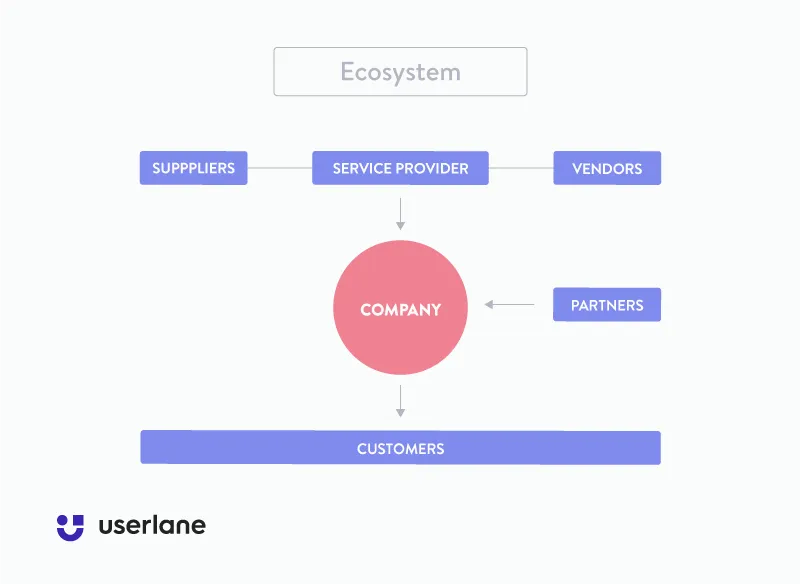Digitization 2.0: Moving to Human Experience

A sure recipe to fail in the digital transformation is creating a change management program that revolves around technology instead of taking into account people and their experiences: digitization is a disruption that affects the human experience.
Innovation makes sense if it focused on people and their expectations. Digital transformation becomes more than a buzzword only if it creates a great human experience for all the parties involved in the change process.
Everything else, from processes, to technology, digital strategy, communications, and alignment is to be considered a secondary byproduct of a digitalization strategy that hinges on the human experience.
In my fifteen years in the digital innovation field, I’ve spent some time consulting and worked with a plethora of large corporations in very different sectors.
What I noticed is that, often, values and ideas don’t turn into actionable points of action that lead to innovation. A lot of companies introduce big terms in their value proposition but they seem to miss the point when it comes to fully grasping the reality that lies beneath a simple word.
We often talk about customer experience and user experience. Both are essential components of a digital strategy. At the same time, we also know that transformation is directly linked to a great employee experience.
A lot of companies talk about these concepts in term of efficiency, completely missing the point of what those words represent.
In general, then, technology and change processes target people and their experiences. Therefore, the human experience in general, should be the main focus of transformation.
Visit our knowledge hub makes sense only if the processes we optimize lead to a better experience for our customers. At the same time, innovation is sensible if this enhances the experience of people who have to work with the new processes as well.

Your company is that entity that orchestrates relationships with different parties. We define stakeholders based on their role around the operations of our business. But no matter if we’re dealing with suppliers, partners, customers, users, or employees…after removing a certain percentage of bots, we’re simply dealing with people and digitization is creating frictionless transactions and a transparent flow of information among human beings.
Some innovation needs to be aimed at improving processes, efficiency, and profitability. But when it comes to digital transformation, changes must revolve around human beings and their expectations.
Let’s go through a quick overview of the steps that companies need to go through in order to start a change management process that leads to the creation of a better human experience.
Table of Contents
Step 1: Choose Your Benchmarks Wisely
It’s true. There are tons of companies out there that are literally rocking innovation and digital transformation.
They might have started off with the right foot, and at the right time, they might have found the right people, gained access to the right resources…no matter what, comparing your current efforts with digital transformation disruptors and leaders can be frustrating and overwhelming.
Such a feeling might lead to paralysis which is exactly what you need to avoid.
Digital disruptors can be an awesome source of inspiration for digital transformation trends, but not all companies are meant to go through the same path.
Striving for perfection is okay…not moving until everything’s perfect is not.
Step 2: Walk The Talk
Stop talking about innovation. Stop creating academic papers on the topic. Stop creating change management programs and presentations which aren’t connected to any true initiatives. Stop telling people that they need to innovate and just start leading innovation into every structure and decision making process.
Simply moving things around to see what happens really doesn’t help. If the ingredients you purchased are bad, no matter how you mix them, every recipe you create will be disgusting.

You can’t manage change without a proper plan, the right resources, and structures you need to use to support innovation.
Enable people to share information, create structures and frameworks for innovation, allow ideas to spread, create implementation plans, monitor, test, take risks.
Innovation is intrinsically connected to risk. Period.
Doers win.
Step 3: Create Meaningful Employee Experiences
All the rules that apply to a digital customer also apply to employees in the era of digital disruption.
Digitization and digitalization revolve around the concept of creating a great human experience. But we can’t solely focus on the experience of our customers.
If we manage to create meaningful experiences for our employees, they will in turn be more likely to be able to focus on creating a great experience for our customers.
The kind of experience your customers will go through is directly connected to the experience you offer to your employees.
Employees of the old world work for their salary. They know they’ll never make an impact. They’ll never change anything. They lack initiative and loyalty. They do what they’re required to do a leave.
And the main cause for this is the way people in the pre-digital-transformation companies are managed. An outdated management strategy combined with strict hierarchical structures and inflexible processes lead staff to be disconnected from their product or service and customers.
An example of such people who don’t care about customers and their experience?
A few months ago I had a major problem with my landline phone and internet connection. Their support line didn’t know how to help me. Since then, I keep experiencing the same problems over and over. After each call I reviewed their service as poor. The churn flag didn’t trigger any sort of automation!
I checked online a way to cancel the contract. No success. Had to call support again. After being redirected to a person who manages customers and contracts I told her I wanted to cancel my contract. She told me how to proceed and simply ended the call with “anything else I can do for you?”. Felt as special and important as a pork chop at a vegan restaurant.
Employees of the digital era love to work at their company, go through personalized employee training programs that support them and their personal growth. A great employee experience creates true connections with the brand and the values the brand stands for.
Modern employees create customer-centric processes and sincere dialogues with their audience because are used to working in an honest environment that value people and their experiences.
Step 4: Create a Meaningful Ecosystem that Supports Your Digital Transformation Strategy
The success of digital operations can be limited by internal competency and capabilities, but it might as well be hindered by the partners and suppliers you allow into the ecosystem you operate in.

Let me share with you a very straightforward example.
A couple of weeks ago I bought some new furniture. The store in question is well-known for their streamlined processes, customer-centric mentality, omni-channel infrastructure, and interfaces. A digital dream come true!
They manage all their deliveries through an external partner. This partner is a 1.0 analog dinosaur managed by people who still think that having a lunch break is a perk for their employees. No direct contact, no way to follow your order, no support. They messed up the delivery and told me there was no way to solve the problem. The only thing left was actually going to the furniture store and beg them to get a hold of those people and arrange another appointment. Or, in my case, simply cancel the order.
Even though this particular company boasted flawless and modern digital competency, it managed to damage its own reputation and monetarily affect their business as a result of their partner network. If you can’t control what is happening in your own ecosystem, you are almost encouraging self-harm on your company.
Step 5: Define what Success Is with Your Customers
If you want to create a truly extraordinary human experience, your business must focus on leading customers to success. And the first step is identifying what success actually is.
For some businesses the task is relatively easy (in essence, customers of an ISP are successful when they can be online and receive good customer service) while for others it is more complicated since their product or service can have multiple implementations for different use cases.
That’s why it’s important to fully understand what different customer personas expect based on how they’ll integrate your product or service. For specific accounts it’s also important to have a proper dialogue in which goals and metrics can be decided upon while defining a desired outcome.
As usual, customer success remains the ultimate goal of a great CX centric business strategy and hence also the main focus of change management processes that involve innovation.
Step 6: Define and Map the Customer Journey
Innovation always starts with a thorough analysis of the status quo.
Companies that want to create value for their customers know how to lead customers to success with minimum friction along the way.
This process starts with collecting all the information you can regarding the current touchpoints along the customer journey.

Customer journey mapping means tracking every touchpoint carefully. Such a customer experience mapping process is vital to identify potential sources of frustration so that you immediately get to spot areas in which it’s worth investing in order to create more innovative processes.
The next step obviously involves a thorough customer journey analysis. Every step in the journey that causes delay, friction, frustration, doubt, insecurity, stress, lack of trust, or confusion can be revised and optimized to create a better human experience throughout different phases, from discovery, to awareness, consideration, negotiations, implementation, and support.
Step 7: Identify Capabilities and Pinpoint Pockets of Innovation
Before starting with a proper plan it’s worth checking what resources and capabilities your company can already leverage.
There are skills and resources you can already take advantage of but it’s necessary to collect information and data across all departments.
Knowing what processes, people, resources, tools you’ll be able to rely on can differentiate you from your competitors by helping you create a more organic, natural, and human experience.
Are there particular areas in your company where units are already driving innovation at multiple levels? For example, units which have proven to be particularly good at streamlining processes, introducing automation and personalization, introducing disruptive mechanisms that had a true impact on operations…
If so, it’s time to pinpoint such units and support them in order to spread innovative processes throughout the entire organization.
Step 8: Deal with Internal Weaknesses
After identifying internal capabilities which can be leveraged to support a digital strategy, it’s time to identify those areas in which your company struggles to excel due to the lack of resources, people, or know-how.
Problems connected to know-how can often be addressed by improving recruiting and employee retention processes.

When it comes to issues that involve the lack of technology or capabilities which would take years to develop, it’s always a smart move to look around and:
- Create new partnerships
- Acquire businesses that master the processes and the technology you need to strengthen and defend your position
- Cooperate with startups that lead innovation by including them in your accelerator programs
Step 9: Pro-actively Address Problems Connected to Resistance to Change
Of course, mastering a true omni-channel strategy is difficult. The way to get there is quite intricate and it often involves way too many changes in several different units. Either your business was born directly in the digital age, or chances are many areas kind of developed an intrinsic defense mechanism against innovation.
Dealing with this kind of resistance to change (brought in by habits, culture, hierarchies, processes, regulations…) at a later stage can be difficult.
The idea is trying to pro-actively intervene and set the stage for innovation through:
- Information
- Incentives
- Gamification
- Motivation
- Clear Communication (vision, benefits, advantages…)
And, of course, dealing with new processes might also require the introduction of new technology. Being proactive in this area means choosing technology that takes into account a great user experience (UX) first, in order to support your employees.
Additionally, an interactive performance support solution like Userlane is the perfect way to address problems connected to Visit our blog.
Step 10: Introduce Truly Agile Processes
If you want to prepare for innovation, you need an implementation plan.
True agile processes allow companies to move beyond strict norms, hierarchies, dependencies, and logistical constraints and set the stage for disruptive processes.
Companies worldwide are applying SCRUM project management at large scale while also working on managing DevOps, shortening information pathways, speeding up decision making processes, and allowing people to quickly act on the decisions they made.
The keywords here are enabling and empowering.

But these terms are lost in the sea of buzzwords if they aren’t connected to an innovative management approach.
The whole concept of lean project management, enablement, and modern management requires a whole dedicated post which we’re going to publish very soon!
Step 11: Create Spaces That Support Innovation
As mentioned, creating a great human experience starts with creating a great employee experience.
There are companies that invest a lot in creating spaces that support innovation and change.
Experimentation is the playground of innovation.
I recently visited the premises of a company in which they created a room for engineers to play around and test their hypotheses.
Say somebody has an idea. Instead of creating a blueprint, define the scope of the project, send out papers and so on…this person can simply get up, literally walk to an adjacent room and through 3D-printing and other rapid tooling systems immediately test their hypothesis.
In the spirit of design thinking, the same company also offers plenty of portable whiteboards and sticky notes in every corner to make sure that every idea and project can be immediately visualized and manipulated.

Because they offer such a creative working environment, productivity has significantly increased in a short amount of time and the company quickly became a leader in innovation.
Step 12: Create an actual Change Management Plan
Different areas of innovation might require different resources and processes.
Companies need to chase after attainable goals and limit the number of activities they want to work on at once.
A proper change management plan should tackle one specific area that requires innovation and introduce a maximum of three improvements that will ultimately work towards creating a better experience for both customers and employees.
There are several questions you need to ask yourself and these include things like:
-Are there any companies in our vertical that successfully tackled the same challenges and successfully optimized processes you’re about to optimize?
This can be the first source of inspiration.
-Generally speaking, at what stage of digital disruption are we?
Measuring your digital maturity will allow you to understand how you can move on to the next stage.
-Are mid-managers on board with the strategy? Everybody in the know?
Innovation is strictly connected to 1) alignment and 2) mentorship
-Do we have the right software solutions to manage change?
Project management and having a complete overview of what’s going can make or break your change management program.
-How are we going to launch and implement new software?
Ideas without the right instruments for implementation often remain just ideas.
-Did we communicate our strategy clearly across all units?
Nothing hurts your strategy more than not being able to communicate your intents and not motivating people who are involved in the process.

–How will you measure success?
Human experience can quickly become a very slippery subject. How can you concretely measure the impact of your strategy on the lives of your employees and customers?
-How can we achieve a full alignment?
Needless to say, if you, as a CMO, CIO, or CDO manage to transform your unit but the change stops there, people will not really perceive any improvement. Win other stakeholders over and push for company-wide changes.
-Are the priorities clear for everybody?
Setting clear priorities is the only way to deal with trade-offs and manage goals properly.
Are all the decisions made by the stakeholders aligned with the main priorities within the scope of the entire change process?
Once your unit can find clear answers to all these questions, then it’s time to create a proper roadmap and a schedule for implementation!
Step 13: Create Truly Cross-Functional Innovation Units That Cooperate to Create a Great Human Experience
The success of change operations depends on how fast information in the digital transformation and processes can flow from one unit to the other.
Successful units need to become an example and a form of internal champion that can be used to prove ROI, and motivate people.
Unless you have proper measures in place to centralize information, collect impressions, and monitor and analyze success innovation can’t become the norm across the board.
Step 14: Monitor, Analyze, Assess, Measure, Adjust, Repeat
As for every change management process, each decision needs to be tracked and linked to direct effects, monitored, and linked to clear metrics to assess success.

And every process needs to be documented thoroughly to make sure that successful initiatives are immediately repeatable.
In Conclusion
The road to a truly meaningful digital transformation is long and very bumpy.
But the whole process is bound to fail from the very beginning if the purpose of change is solely introducing innovation for the sake of it or because it’s simply more convenient for your company.
People buy your cars because they’re safer than they were ten years ago and that makes them feel good. They don’t buy your cars because of the new robots you implemented in your assembly line. Even though such technology helps you improve quality and hence safety.
The same holds true for software or services. People expect to go through smooth transactions from the beginning of their journey until the end. They don’t buy your product simply because you have agile processes in place.
They buy your product or service because they feel safer, their life is easier, their voice is heard, they can rely on human beings when they have problems, they see that their experience is fully tailored to their needs…in a nutshell:
The experience you create with innovation for your employees and for your customers defines your company and its success in the digital transformation.
Paradoxically, the more digital the world becomes, the more we know we need human experiences to feel good, generate trust, and interact with each other.
That’s why a truly amazing human experience should be the main focus of every change management process.

